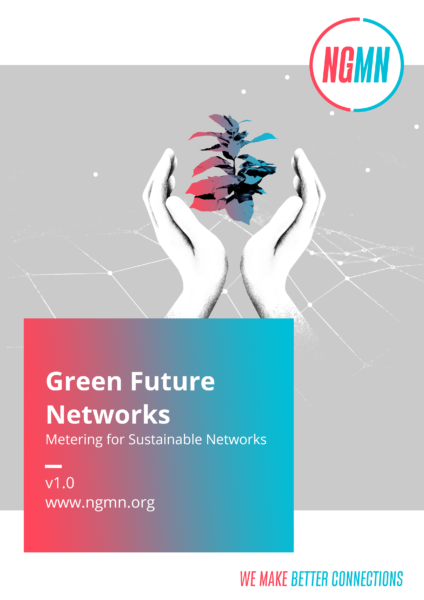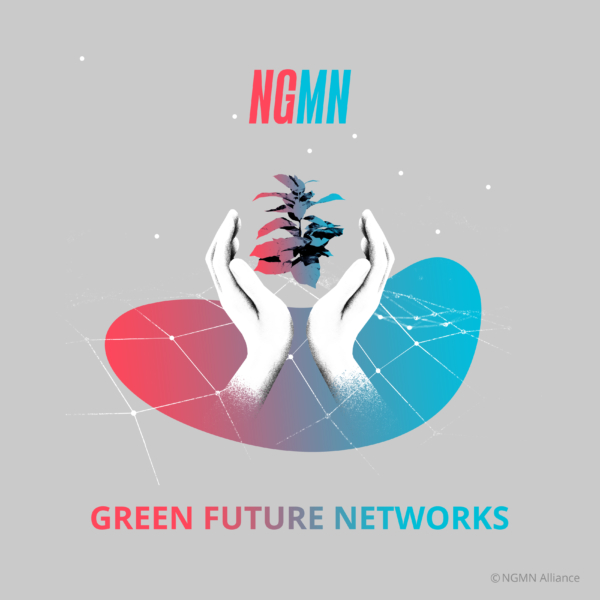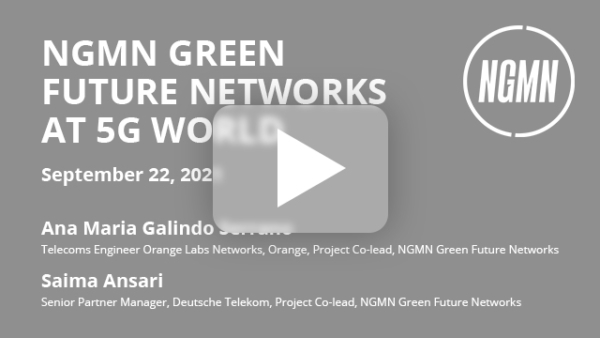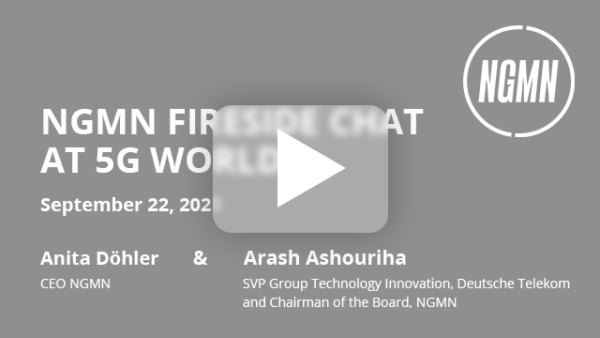Frankfurt, Germany, November 9, 2021: Today, the Next Generation Mobile Networks (NGMN) Alliance released “Green Future Networks: Network Energy Efficiency”, a publication which focuses on best possible ways of reducing the energy consumption of mobile networks, a key concern of Mobile Network Operators (MNOs) and an important step towards greener networks. In its publication, NGMN studies the different existing and future energy saving features and their potential when rolled out in the networks – among others, the usage of automatic wake-up/sleep modes, virtualisation technology, and the usage of efficient power amplifiers combined with massive Multiple Input Multiple Output (MIMO).
Key aspects include:
- application of energy efficiency techniques across the three levels of next generation network operation – the base station equipment level, the site level and the network level
- importance of leveraging the spectral efficiency of the 5G air interface and its more advanced sleep modes
- importance of deploying sleep mode functions that shut off hardware when the load is low (path to zero watt at zero load)
- usage of renewable energy for on-grid and off-grid sites, smart batteries, power efficient power supplies
- free and liquid cooling solutions in technical sites
- flexible cooperation between 5G and LTE
- positive effects of massive MIMO solutions in 5G
- advantages of virtualisation technology for energy efficiency of mobile networks
- benefits of Artificial Intelligence (AI) based energy saving solutions and what it takes to build such algorithms
Laurent Leboucher, SVP Orange Innovation Networks, Orange states: “Tomorrow, networks will be greener by design! Today, Orange is already working hard to save energy consumption and reduce the carbon footprint of its networks, making continual progress, through its research efforts and operational deployments. However, this needs to be an industry move and this is where the NGMN Alliance plays a strategic role in unifying the industry. With our knowledge and experience in this area, Orange is delighted to co-lead NGMN‘s Green Future Networks project. As an industry, altogether, with the right technologies and skills, we will be able to fulfill our ‘Green’ commitments.”
Anita Döhler, CEO of the NGMN Alliance, says: “To continue improving the energy performance as well as reducing the global networks energy consumption, vendors and operators are encouraged to put a strong focus on the solutions identified by our Green Future Networks project. The path to zero watt at zero load for future network generations is to be continued, especially, considering the use of AI techniques to intelligently coordinate and optimize more precise decisions for activation and deactivation of the sleep-mode and shut-down features, as well as on-demand network dimensioning.”
The publication also addresses server virtualisation technology which allows workloads to be optimally scheduled on hardware, for example by consolidating workloads onto a reduced number of CPUs for energy efficiency. With virtualisation technology, multiple applications and workloads can be run on a single server, thus increasing energy efficiency. This allows multiple network workloads to run in Virtual Machines (VMs) or containers, thus enabling efficient use of the common server resources.
Despite the fact that operators are already increasing the use of energy saving features, forecasts point to a significant rise in energy consumption over the next couple of years due to considerable increase in traffic across a vast range of use cases, new technologies and spectrum, a great deal of connections, and network densification. Here, AI could play an important role. By predicting and learning the traffic behaviour, AI algorithms define the activation/deactivation of sleep mode functionality and site energy management without impacting the overall performance including Quality of Experience (QoE). AI is still in an early phase and more development and research is needed to reach its full potential. AI based energy saving solutions can greatly increase the energy performance of cellular networks.
The NGMN Alliance emphasises the importance for all vendors and operators to continue the implementation and activation of advanced energy saving features supported by the 5G standard. In a next step, NGMN will look at further opportunities in phase 2 of its Green Future Networks project. Interested parties are invited to contact the NGMN Office for further information and how to join the Alliance.
The present publication is the third deliverable of the NGMN Green Future Networks project following two publications in July 2021. The first, “Sustainability Challenges and Initiatives in Mobile Networks” introduces the subject of sustainability in mobile networks and provides context of this broad and complex topic, the second, “Network Equipment Eco-Design and End to End Service Footprint” gives an overview of the existing procedures and visions for eco-design of Information & Communication Technologies (ICT) network equipment. The next publication in this context will be published later this month and will focus on ”Metering for Sustainable Networks”.






